Weightlifting for beginners: how to get started
Want to build muscle but not sure where to start? Our expert-backed guide will help you navigate the basics of weightlifting for beginners
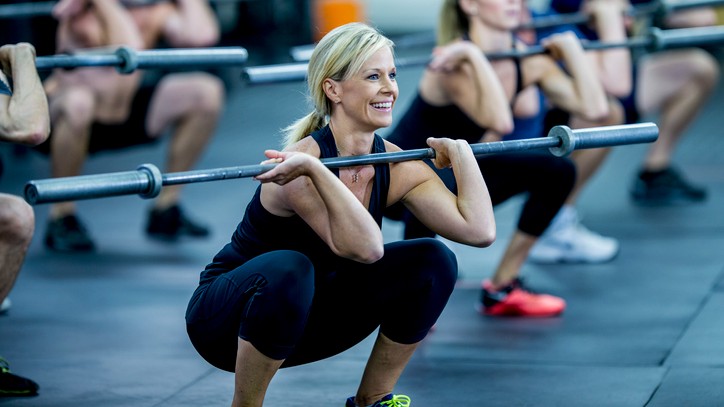
Want to find out about weightlifting for beginners? Then you’re in the right place. The weights section in the gym can seem intimidating if you’re just starting out, but weighted workouts can help you build muscle and boost your confidence while toning your body.
Whether you’re weight lifting at home and looking to perfect your home weights training by selecting the right kind of dumbbells, or you want to find out how to lift a barbell for the first time, understanding the basics is key. Weight training can be handy for working for different muscle groups and many people choose to focus on building strength in specific areas, such as the lower body and upper body.
To help you feel confident in the weights section, we’ve put together a simple guide on weight training, including its benefits, some simple home workout ideas with exercises that you can do from the comfort of your living room, instructions on how to find the right weight to start off with, as well as tips and tricks from PT’s to help you get maximum results from your workout.
Need some gear to get started? Pick up some of the best adjustable dumbbells and you'll be able to slowly add weight as you get stronger.
Is weight lifting better than bodyweight exercises?
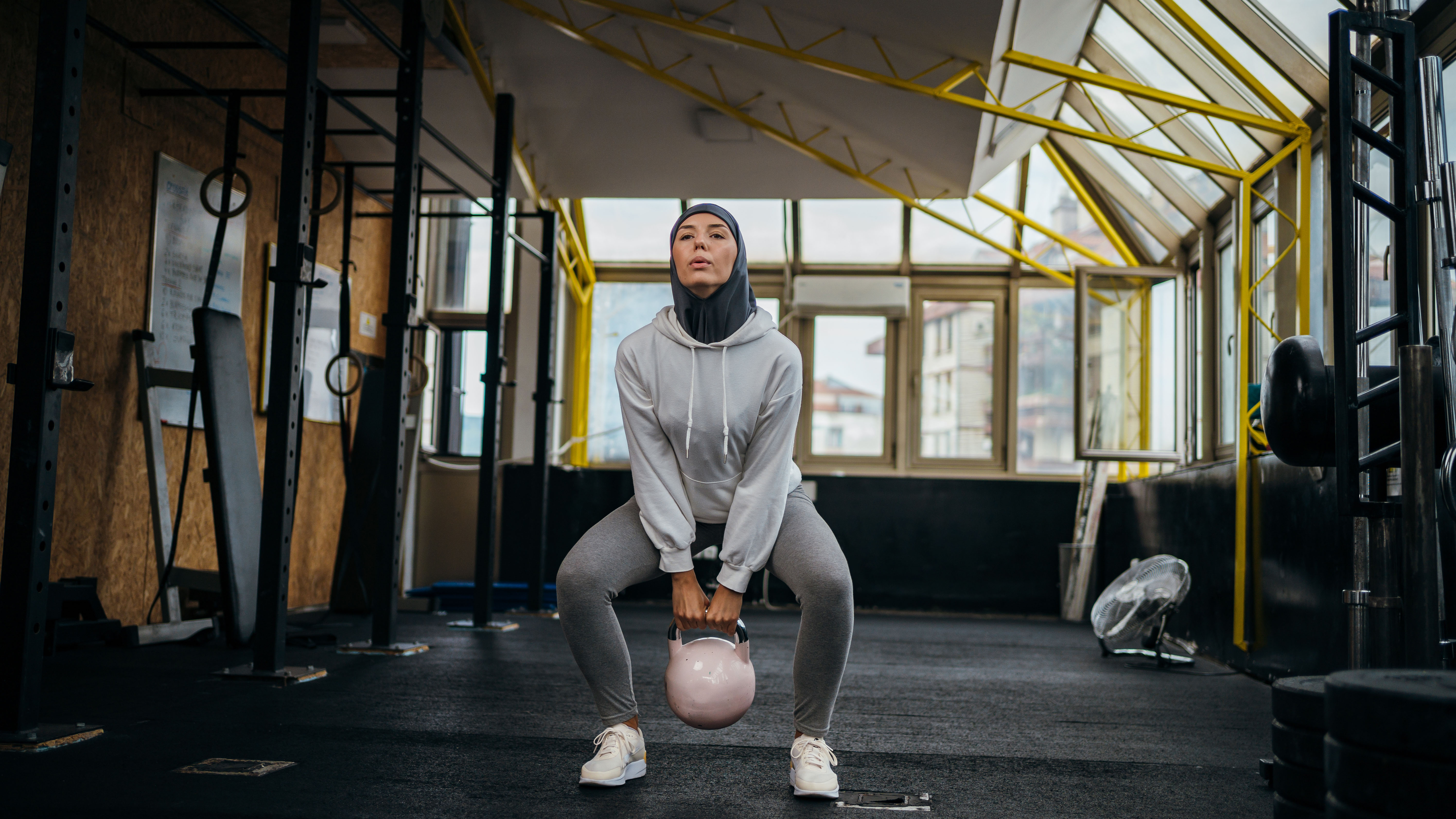
“Both bodyweight and weight training are forms of resistance training,” says personal trainer and GP, Dr. Folusha Oluwajana. “Bodyweight training consists of exercises where your own body weight provides the resistance. Whereas weight training involves using additional equipment to add resistance. This equipment can range from dumbbells and barbells to resistance bands and sandbags, and even weighted balls or household items.”
While bodyweight exercises can be effective, you cannot increase the weight of the resistance that you’re training with, which means your results might stagnate after a period of time.
“The goal of resistance training is for your muscles to work against additional resistance, to build strength, increase muscle and improve fitness,” says Oluwajana. “Bodyweight training, although effective, is ultimately limited by your own body weight, but by adding additional external resistance with weight training you can easily increase the load, adding to the challenge and giving you quicker results. At the end of the day, a squat with a barbell is going to be more challenging than without.”
- Read more: What is weight training?
Basic weight lifting exercises for beginners
If you’re looking for weight lifting for beginner's exercises, first off, make sure you’re familiar with a few key moves before you venture into the weights section. Doing these exercises without any added weight will help you perfect your form. Then, when you feel confident that you understand the movement, you can add weights.
Dumbbell squats
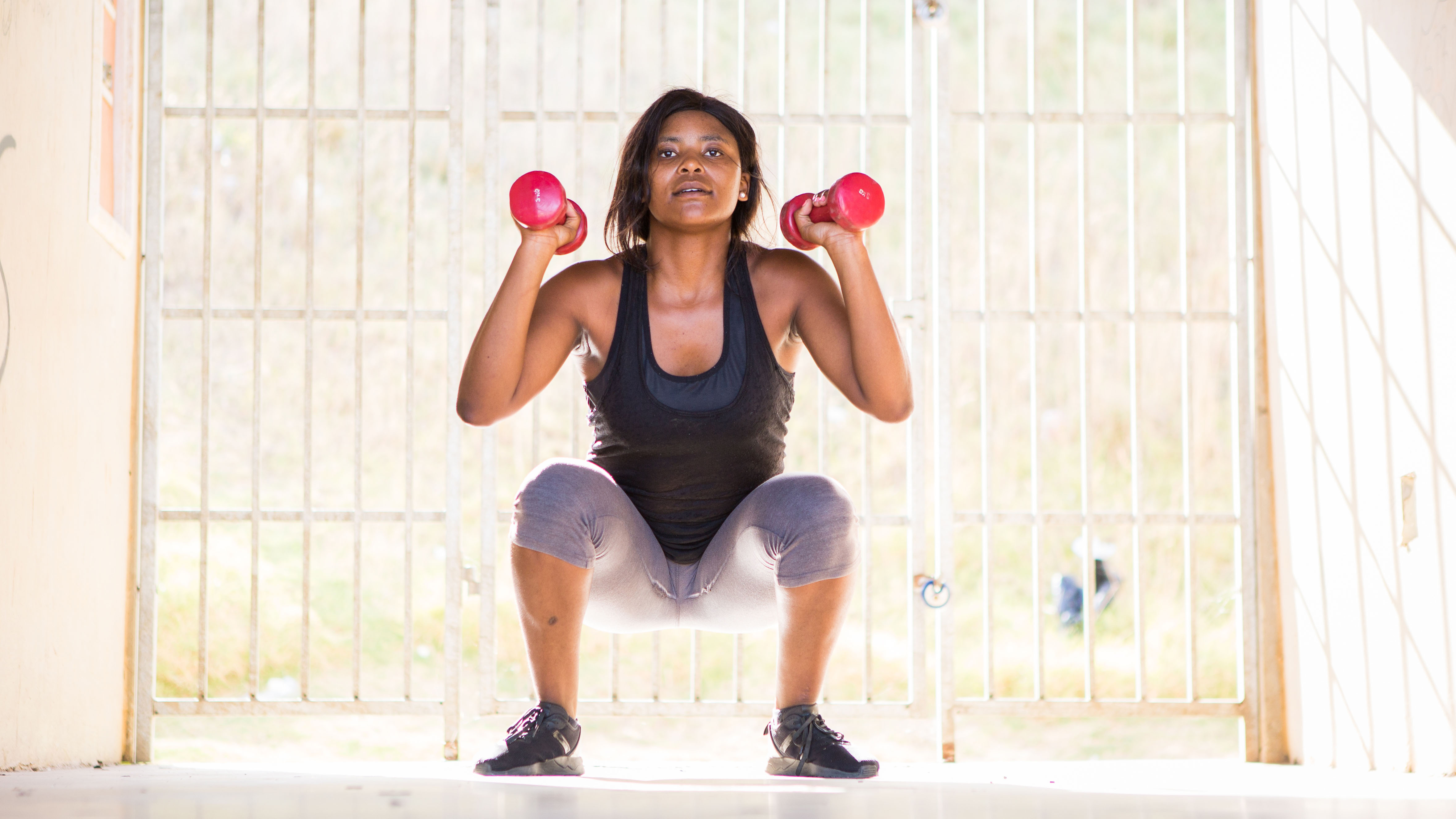
“This is an excellent exercise to start building strength in the lower body,” says Oluwajana. “Hold a pair of dumbbells in each hand by your sides or on your shoulders. Stand with your feet shoulder-width apart, push your hips back and bend your knees to lower down as far as is comfortable while maintaining a neutral spine. Then, return to standing.”
Farmer’s walks
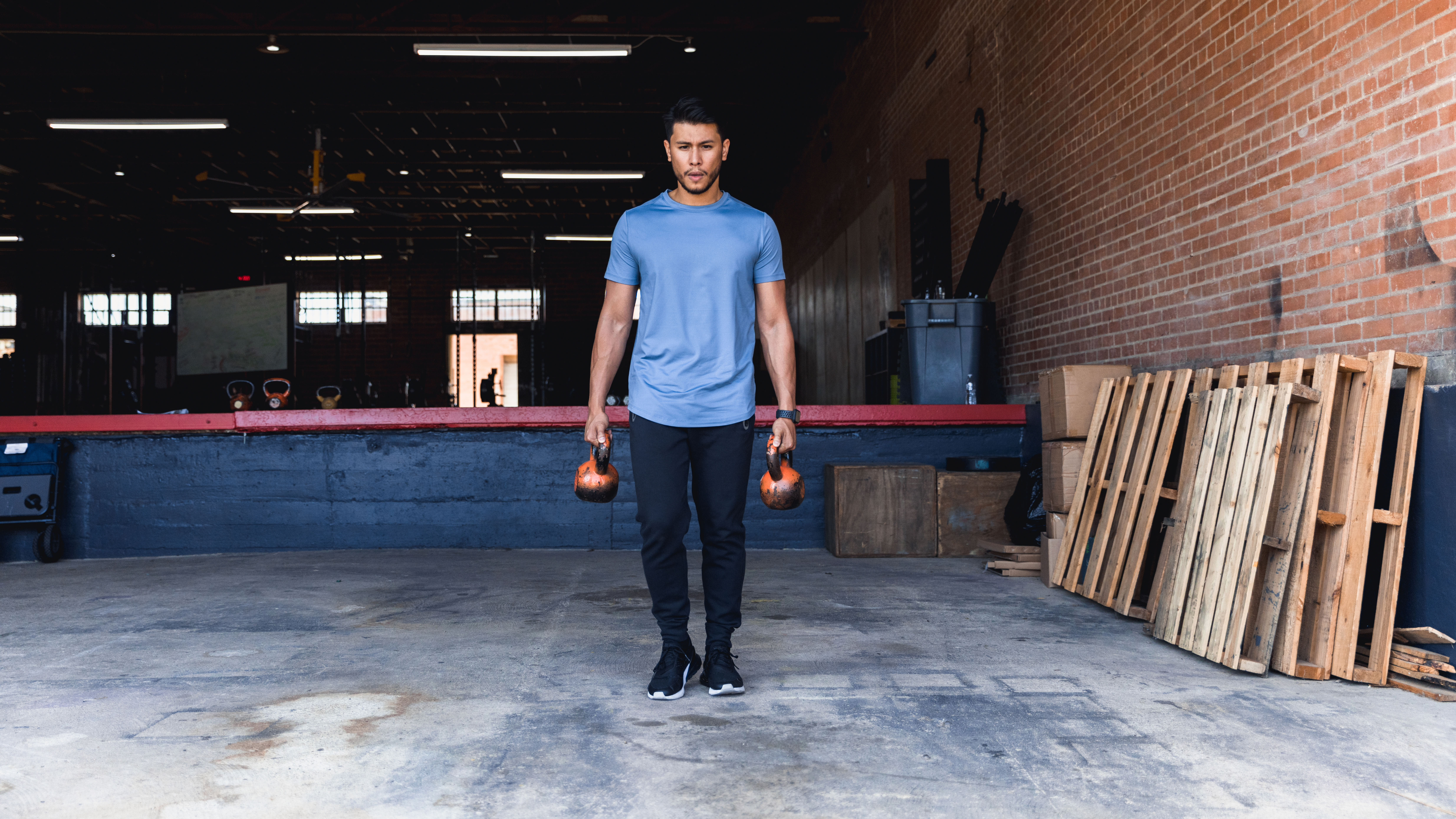
“Farmers walks are a great full-body weighted functional exercise,” says Oluwajana. “Hold a heavy weight (dumbbell, kettlebell or any weighted item) in each hand. Maintain an upright posture with your shoulders pulled back and down. Then walk for your desired distance or time while holding the weights in each hand.”
Overhead press
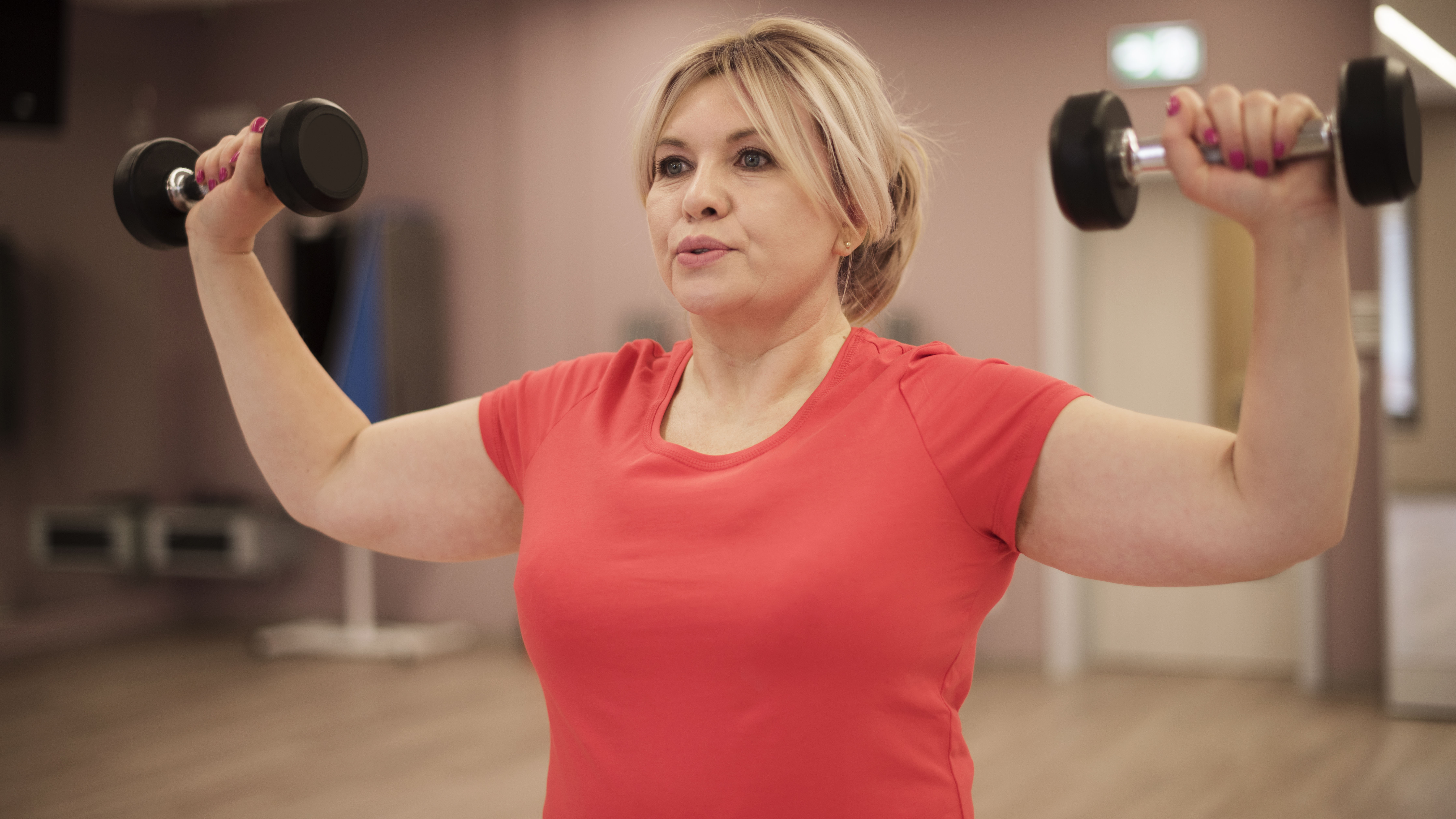
“The overhead press targets the shoulders and can be done with different pieces of equipment, such as dumbbells, barbells, kettlebells, resistance bands or a machine press,” says Oluwajana. “It can also be done using both arms at the same time (bilaterally) or with one arm at a time (unilateral). Your hands should start at shoulder height then press the weight upwards until your elbows are fully extended. Try not to have your elbows flare out at 90 degrees as you press, but bring them slightly forward about 45-60 degrees angle to your body as it is safer for your shoulder joint.”
How to find the right weight to start weight lifting
“The goal is to use a weight that is challenging for you,” says Oluwajana. “A good way to gauge this is for the desired number of reps you are doing, you should only be able to complete two or three more reps with good form before you fail. So, if you’re doing 10 reps, pick a weight that you can use for about 12 to 13 reps before failing. If you cannot complete the 10 reps, you’ve gone too heavy, and if you can easily do more than 12 reps with the weight, it's too light. This also means the weight you choose will also vary depending on how many reps you are doing. The weight you would use to do 6 reps will be heavier than what you would use for 15 reps, for example.”
Other tips
If you’re looking for advice on weight lifting for beginners, then these handy tips will help you nail your next workout.
1. Focus on the spine
“For those looking to work out while avoiding any unwanted injuries, the first place to check in with is your spine,” says PT at Total Fitness Dean Zweck. “Start off standing upright, with your back straight and your abs tight. With weightlifting, make sure to maintain this posture throughout, so that your spine is supported. If you notice any pains or strains, stop immediately and rest to make sure you aren’t injuring yourself.”
2. Get the right kit
Make sure you wear something that is comfortable while working out. Gym tights are good for moves such as squatting and lunges and for women, making sure you have a supportive sports bra to keep you secure while working out is also essential. It’s also really important that you stay hydrated, so we recommend investing in one of the best water bottles so that you can replace lost fluid after your workout.
3. Don't be afraid to ask for help
“If you're a true beginner, it's always wise to seek the support of a professional PT, particularly if you're going to be using free weights in a gym,” says fitness expert at Decathlon, Nicola Barnabo. “Start from the lowest weight available and work your way up until you can comfortably achieve 8 to 12 reps without it feeling too strenuous or risky. Then, gradually, over a period of a few weeks, increase the weight when your current weight starts to feel too easy.”
4. Use a mirror
“If you’ve ever been to a gym before, you’ll have likely noticed that the weight areas are full of mirrors,” says Zweck. “They’re there to help you make sure you’re maintaining the correct form while you work out. When focusing on lifting weights, it can be difficult to tell if your technique is correct, but by working out in front of a mirror, you can see your form, allowing you to easily see whether or not you’re doing it correctly.”
5. Start slow
“When starting out, try replicating the movement of lifting a weight without using one,” advises Zweck. “While focusing on your form, you should also aim for your movements to be slow and controlled. By doing this you’ll also be hitting those harder-to-train muscles, which will lead to better results in the long run.”
Sign up for the Live Science daily newsletter now
Get the world’s most fascinating discoveries delivered straight to your inbox.
Stacey Carter is a Freelance Health Writer who has written print features and digital content for titles such as Woman & Home, Natural Health, Women’s Health, Get The Gloss, and Stylist. You'll find her covering a wide variety of health-based topics, talking to leading figures in the fitness industry, and investigating the latest trends in wellness. When she’s not at her laptop, weekend hikes, testing out new recipes in the kitchen and LISS-style workouts are her favourite ways to switch off.











